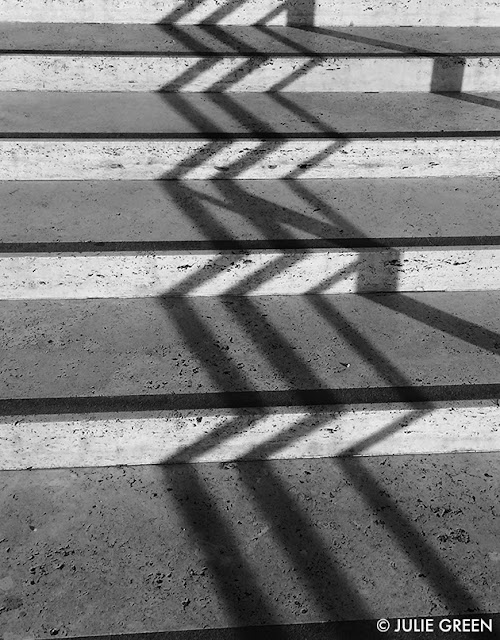 |
| "Down the Garden Stairs No. 1" 2017 from the Sun Shadow Series |
I have always fought against the two dimensionality of photography. I was always trying to expand space within the constructs of the very nature of the medium. But in this
Sun Shadow series I've been working on, I've actually embraced it and have been working on ways to actually flatten out perspective within the photograph.
In "Down the Garden Stairs" I began looking once again at how graphic hard edge shadows created in the midday sun refract against the linear steps below. Removing color from these images, it flattens the image plane out even more to create a dialogue between just the shapes and the space they occupy.
I am continually in awe of
Ruth Bernhard's 1930 photograph "
Lifesavers", where the objects are transformed by the space and light in which they are arranged. But it's the discovery of the unexpected in the image that rings my bell, especially when a visual mystery is revealed over time.
I'm also fascinated by the geometrical work done by the Concrete artist
Alberto Magnellie and
Auguste Herbin's cubist forms. Both were looking to see how form, shape and color interacted with each other.
Looking is where its at,
Julie Green
December 9, 2017
 |
| "Down the Garden Stairs No. 2" 2017 from the Sun Shadow Series |
 |
| "Down the Garden Stairs No. 3" 2017 from the Sun Shadow Series |
 |
| "Down the Garden Stairs No. 4" 2017 from the Sun Shadow Series |
 |
| "Down the Garden Stairs No. 5" 2017 from the Sun Shadow Series |














